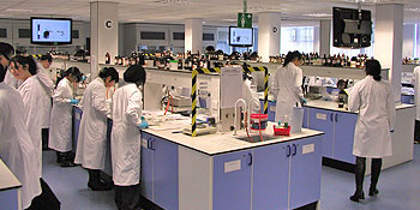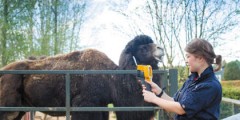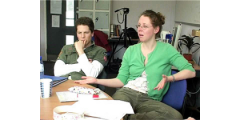Effective demonstration of bench practical skills to large laboratory classes using an integrated system of visualisers, screens and SMARTboard
March 1, 2009
Colin Melia: “In these labs, we teach our students how to make different types of medicines including liquid medicines, creams, ointments, powders and suppositories. The students learn skills that they’ll have to use when they work in a hospital pharmacy manufacturing unit, a ‘specials’ medicines lab or anywhere where individual medicines have to be made …
Linking theory to practice in an undergraduate veterinary curriculum using case-based teaching: students’ perspectives
September 9, 2008
Hany Elsheikha: Background: “Case-based teaching (CBT) has been used extensively in medical and dental educational programs to develop critical thinking skills via a learner-centred approach. At the School of Veterinary Medicine and Science, University of Nottingham CBT was introduced as an ancillary teaching intervention to integrate clinically relevant material into the basic science component of …
Storytelling and role play in developing communication skills
April 14, 2008
Video >> Interviewer: “I know it’s something that you’ve been interested in for a number of years is the role of storytelling in teaching. Could I ask you to say a few words about that?” Paul: “Yeah, a few years ago now I wrote a book, with my wife Rhiannon, Storytelling in Therapy, which was …
Using problem-based learning in your teaching – advice for colleagues
March 15, 2008
Video >> Maggi Savin-Baden: “Start by saying it isn’t particularly new, lots of people assume immediately that it is something new and it’s, you know, all symbols and bright lights, but it isn’t really. “I mean it starts with the premise that people start learning through a problem situation of some description that is related to …
Using problem-based learning to develop critical thinking skills
Video >> Paul Garrrud: “Another benefit of the structure we have of working through a case in three group meetings, and obviously they do quite a lot of thinking and research out with those group meetings, is that it gives them an appreciation and some experience of clinical reasoning. “From the patient who walks in …
What do you need in a problem-based learning room
Video >> Kate: “We’re sitting in one of the Derby PBL rooms now – what are the special features about this kind of workspace?” Jonathan Ball: “I think the key elements are the fact that it’s very Arthurian, so there’s a round table and as a facilitator you’re certainly one of the group, rather than kind …
The problem-based learning cycle
Video >> Session 1 Pete Jennings: “PBL starts with session 1 – here at GEM it’s divided into 3 sessions. So session 1, the students come together, they’re presented with a trigger text which gives them enough clues to hopefully identify questions that they might have around certain topics.” Student group working Students: “Low energy …
Preparing for using a student response system in your lecture
February 23, 2008
Video >> Interviewer: “So how do you actually do it?” Andrew: “OK, there’s some software you can download and basically it runs in conjunction with Powerpoint. So you run your Powerpoint presentation and then it’ll just give you an option of “Insert chart”, and then you can insert the type of chart you want and …
Using student response systems to improve interaction in lectures
Video >> Andrew Fisher, Philosophy: “Before, I was doing showing of hands in my modules, which is OK, but people are reticent sometimes to be seen, especially if the subject is quite controversial. So if I asked about fox hunting and there’s one person who thinks its OK they’re less likely to put their hands …
Altering lectures in response to student input
Video >> Interviewer: “Does the student voting actually affect what you deliver in the lecture?” Andrew: “Yes, yep, it does. I know where I want to go, and how to get there is pretty much mapped out, but I’ll put a different emphasis on things. So if typically I’ll have a thought experiment sort of …










